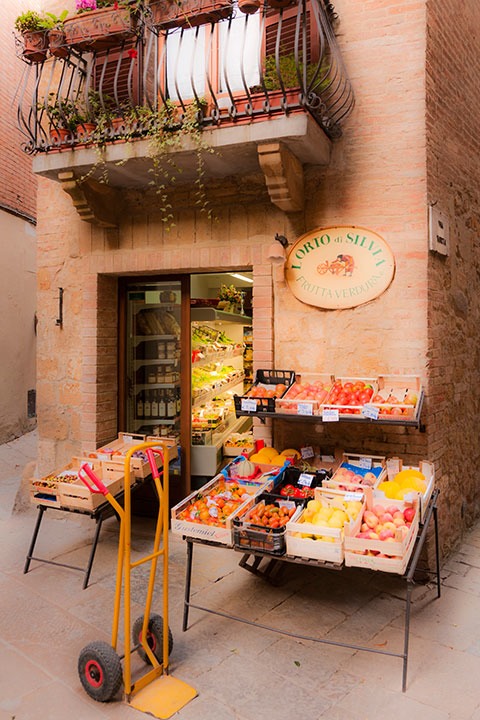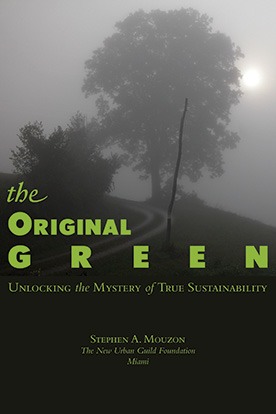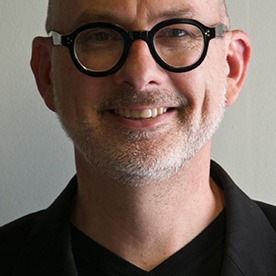search the Original Green Blog

a simple pleasure or visually fussy?
Simplicity isn't so simple, but simplicity done right can create some of the most lovable experiences and things… and the things we love the most are usually the things we sustain the longest. The problem is that there are several types of simplicity, including at least one charlatan close to the end that's not nearly so simple as it appears.
The Bandwidth Pendulum and the Victorian Revival

Conjuring simplicity with images of a simpler time works for a while, but doesn’t ease our bandwidth demands.
The architectural establishment won't acknowledge it, but a Victorian Revival has fluorished for the past three decades in the US, arguably getting into full swing at Seaside. How is it possible that people have embraced things that high-style designers might tag as "fussy" or "frilly" during precisely those decades when our bandwidth has been increasingly sapped away by the 24/7 connectivity of the digital era? I believe the Victorian Revival sprang from a desire to strip away our modern burdens of time demands and complexities and invoke the perceived simplicity of an earlier time. But pendulums always swing back, and while things that recall images of a simpler time can transport us out of the digital torrent for a while, we need a deeper simplicity now, as time demands wash ever deeper over us. Let’s consider several ways of achieving more deeply-rooted simplicity.
Simple to Use

The life expectancy of a tool is inversely proportional to the thickness of its manual.
The best tools need no manuals at all, because their uses are self-evident. And the things that are simplest to use actually lend themselves to much inventiveness of purpose because it’s easy to imagine other things they could be used for that their original designer may never have envisioned.
Simple Pleasures

a Tuscan market, just around the corner
from where the bean soup was served
A simple pleasure is more easily repeated than one that depends on a complex set of conditions.
The caption of this post’s title image asks an important question: Is that bowl of Tuscan bean soup sitting on a checkered tablecloth somewhere in Tuscany simple or not? Visually, there are a lot of things going on, from the texture of the soup itself to the knotty fabric of the tablecloth. So designers might consider the image to be visually complex, but almost everyone else would consider the experience of eating a bowl of Tuscan bean soup in Tuscany to be one of life’s simple pleasures.
And as such, it’s something you can have any time you’re in Tuscany… or any time at all, if you know how to cook. And that’s the great pleasure of simple pleasures: they’re so accessible to us because they come so easily, and many of them can be repeated for a lifetime.
Working Simply

Wanda and I have taken “in-house work” to its logical
extreme, working from home (and learning live/work lessons)
Outsourcing work might be more efficient, but things done in-house are less susceptible to disruption.
Take the IT department, for example. It’s good to have a good IT department. But it’s better to work with systems that are simple enough that you don’t need an IT department. That’s why Apple has fans, while all the other computer companies merely have customers. Those other companies make consultants more powerful; Apple makes me more powerful by making power simpler.
Simply Authentic

cracks are a sure sign that this is a
solid timber column
Imperfections are signs of depth - only thin veneers can be perfect, and that perfection doesn’t last.
Veneers had a long and illustrious history… until recently. For centuries, people overlaid structures built of strong but crude materials with thin layers of costly materials with the intent of making buildings more noble. Today, our motive has changed: we're no longer seeking to make buildings more noble, but to make them maintenance-free. So now we coat building elements with thin layers of cheap materials like vinyl or aluminum in hopes that we will no longer have to care for the building. But because they're cheap and thin, today's veneers can only hide the imperfections of the base material for so long. And when they fail, they do so hideously. Because we've seen far too many cheap veneers come apart at the seams, there is now a budding desire for building with real materials. A timber column, even with its cracks, is better than a structural column encased with a flimsy wrap of other materials. Those cracks in the timber column show that this is the real thing: a building element with depth, and that won't suddenly come apart one day.
Natural Economy

nature reclaiming a place
Nature’s accountant balances all of the books.
Nature is incredibly complex at the microscopic level, but everything balances out. One creature’s waste is another one’s food, as we’ve known for a long time. And even when humans put things far out of balance at one moment in time, nature finds ways of achieving a new balance. Consider how quickly an abandoned place is reclaimed once the people leave. This simplicity of everything balancing out even though the individual workings of nature might involve very complex chemistry or physics is a high standard we cannot really even aspire to yet. The best way to invoke the simplicity of natural economy is simply to plant stuff and feed things, and let nature do its work. We can’t yet manufacture tomatoes, but we can grow them.
Elemental Things

a pool as a simple circle
Elemental forms can be very efficient carriers of information when they ask less of us to unlock their story.
This round pool, for example, is recognizable as such in fractions of a second whereas a more complex water body might require some investigation to see if it’s a stream or a pond. Even if we don’t consciously ask ourself that question, our mind is still burdened with having to recognize the complex shape. The whole world cannot be composed of elemental shapes, of course. But things that can be simply shaped while at the same time being understandable are a welcome relief in our increasingly complex world. In the end, the goal should be to achieve a healthy balance between simplicity and complexity, so the more we’re bombarded with more and more information, the more we appreciate elemental but understandable things.
The Minimalism Hazard

this pavilion is quite beautiful to the trained eye, but
accomplishes little more than a couple umbrellas would do
"Make things as simple as possible, but no simpler.” ~Einstein
Minimalism seems at first like the ultimate simplicity, removing every non-essential thing until we're left with the real essence of whatever we're designing. Unfortunately, many architects ignore Einstein's dictum and begin removing essentials. They eliminate the visible roof entirely, for example, leaving the owner with leaky flat roofs in wet climates. They try to reduce the top of the wall to a single line, but then can't properly flash the parapet. Unlike the iPod, which kept all the essentials but got rid of everything else, much architecture today gets rid of essentials as well in the name of style, and then suffers for it.
Choosing Simplicity
Don’t confuse the path to simplicity with a simple or easy path, as it requires many choices, and editing things out.
Which sorts of simplicity should we choose? Everyone will likely have their own mix, but I’d suggest that any choice that removes clutter and allows us to focus on the most important things is probably a good choice. What do you think?
~Steve Mouzon



